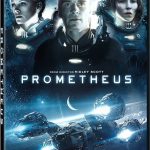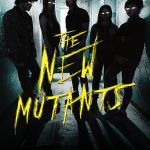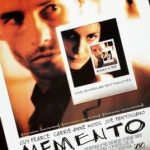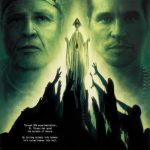The Princess and the Frog (2009)
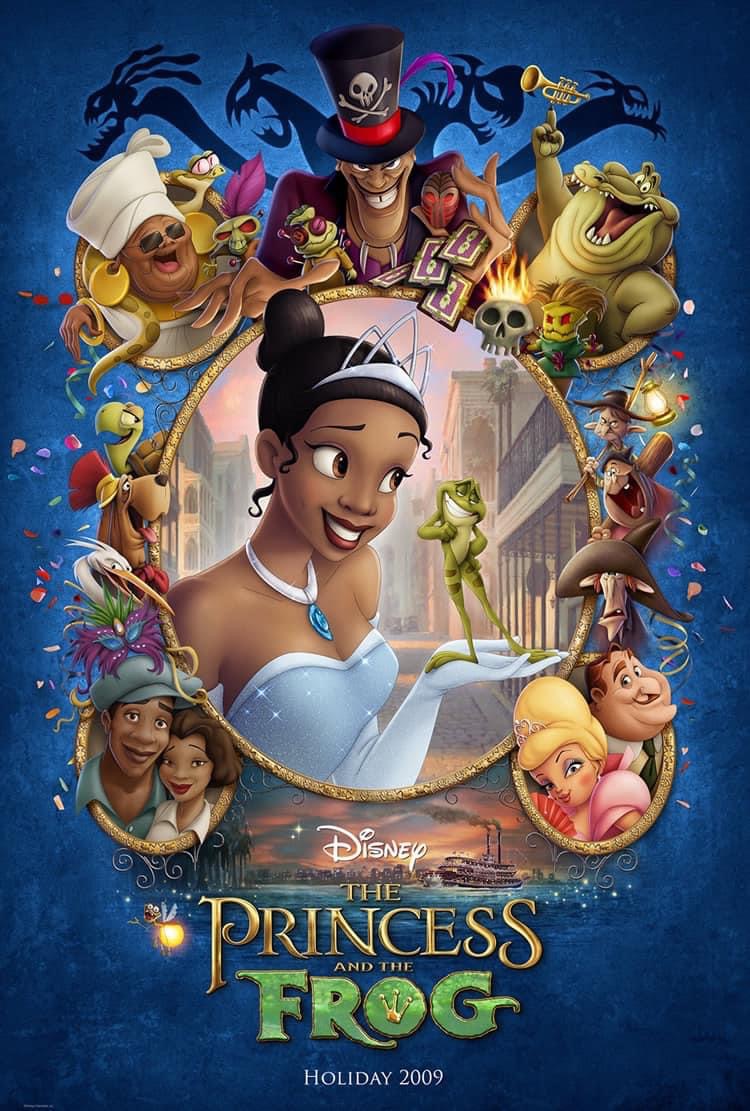
The Princess and the Frog (2009) marked Disney’s return to traditional hand-drawn animation, bringing audiences a fresh take on the classic fairy tale format. Directed by Ron Clements and John Musker, the film features Disney’s first Black princess, Tiana, and is set in the lively city of New Orleans during the 1920s. The movie blends a unique cultural backdrop with classic Disney magic, giving the studio’s “princess” genre a modern twist and a touch of jazz.
Suggested videos for you:
Story and Themes
The story centers on Tiana (voiced by Anika Noni Rose), a hard-working young woman who dreams of opening her own restaurant. Unlike many Disney princesses before her, Tiana isn’t looking for romance or a fairytale life; she values hard work, perseverance, and achieving her dreams through dedication. This theme of ambition and resilience is a refreshing departure, making Tiana one of Disney’s most grounded and relatable heroines.
When Tiana encounters Prince Naveen (Bruno Campos), a carefree prince who has been transformed into a frog by the scheming voodoo practitioner Dr. Facilier (Keith David), she reluctantly agrees to kiss him, hoping to break the spell. Instead, she also transforms into a frog, and the two embark on an adventure through the Louisiana bayou to find a way to break the curse. The story’s central themes include the importance of balance—between dreams and family, hard work and enjoying life, and even between love and self-discovery.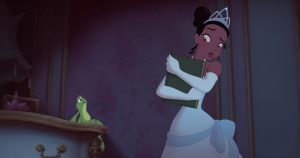
Setting and Animation
The vibrant setting of New Orleans brings an exciting backdrop to the story, incorporating elements of jazz, Southern cuisine, and a lively cultural mix that’s unique in Disney’s animated canon. The filmmakers celebrate New Orleans through lovingly animated streets, bustling markets, and enchanting bayous, creating an immersive atmosphere that reflects the city’s spirit. The hand-drawn animation style beautifully captures the romance and mystery of the Jazz Age, blending Disney’s classic aesthetic with lush, atmospheric visuals.
The scenes in the bayou introduce a range of unique characters and settings, like the friendly alligator Louis, who dreams of playing jazz, and Ray, a warm-hearted Cajun firefly with an unrequited love for a star named Evangeline. These settings and characters contribute to the film’s celebration of Southern folklore and mystique, adding a layer of authenticity to the fantastical elements.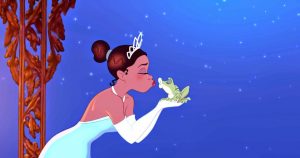
Characters
Tiana is a compelling protagonist, strong-willed and ambitious, but also kind-hearted and generous. Her character stands out in the Disney lineup because of her independence and her commitment to achieving her goals on her own terms. Prince Naveen, meanwhile, undergoes a meaningful transformation throughout the story. Initially selfish and lazy, he learns the value of responsibility and love through his connection with Tiana, making his character arc both humorous and heartfelt.
Dr. Facilier, or “The Shadow Man,” is one of Disney’s most distinctive villains. With his sinister charm, theatrical personality, and magical abilities, he brings an intense and darker presence to the film. His connection to the world of voodoo adds an intriguing supernatural element, with his shadow minions and ability to manipulate others, making him a memorable antagonist.
Supporting characters like Louis the alligator and Ray the firefly provide humor and emotional depth. Ray, especially, adds a layer of sentimentality to the story with his love for the “star” Evangeline, and his faith in his dreams becomes a poignant parallel to Tiana’s journey.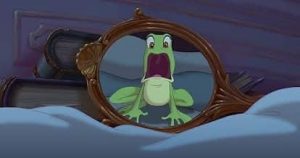
Music and Soundtrack
The soundtrack, composed by Randy Newman, is deeply influenced by jazz, blues, and gospel, perfectly aligning with the setting and bringing a distinct musical style to the film. Songs like “Almost There” capture Tiana’s ambitions and perseverance, with a lively energy that reflects her spirit, while “Friends on the Other Side,” Dr. Facilier’s song, adds a haunting quality that enriches the dark magic of his character. The music feels deeply rooted in New Orleans culture, adding authenticity and vibrancy to each scene.
The song “Down in New Orleans” serves as a recurring musical motif, celebrating the city and grounding the story in its cultural roots. The film’s music stands out as one of Disney’s most distinctive and regionally inspired soundtracks, making the experience immersive and memorable.
Social Impact and Cultural Significance
The Princess and the Frog holds a special place in Disney’s history as the first animated feature to star a Black princess. Tiana’s character and her portrayal were widely celebrated for breaking barriers, and her emphasis on hard work, family, and independence resonated with audiences. Her character was seen as a positive role model, emphasizing the importance of determination and self-reliance rather than traditional fairy tale romance alone.
While the film was praised for its diversity and cultural representation, it also sparked discussions about Disney’s handling of race and its choice to transform Tiana into a frog for much of the movie. Nevertheless, Tiana’s presence expanded the Disney princess lineup to include a more diverse representation of heroines, marking a significant step forward for the studio.
Conclusion
The Princess and the Frog is a richly crafted film that brings together classic Disney magic with a modern perspective, paying homage to New Orleans culture and jazz music. The hand-drawn animation, engaging characters, and unique setting make it a visually and thematically vibrant entry in the Disney canon. Its themes of hard work, love, and finding joy in both dreams and reality make it more than just a fairy tale; it’s a story about the beauty of human resilience and the importance of balance in life.
While the film had a mixed reception upon release, it has since gained appreciation for its cultural significance, memorable characters, and captivating music. Tiana’s journey is a reminder of the power of ambition tempered with love, and the film’s message about finding happiness in everyday moments makes it a timeless addition to Disney’s animated legacy.

